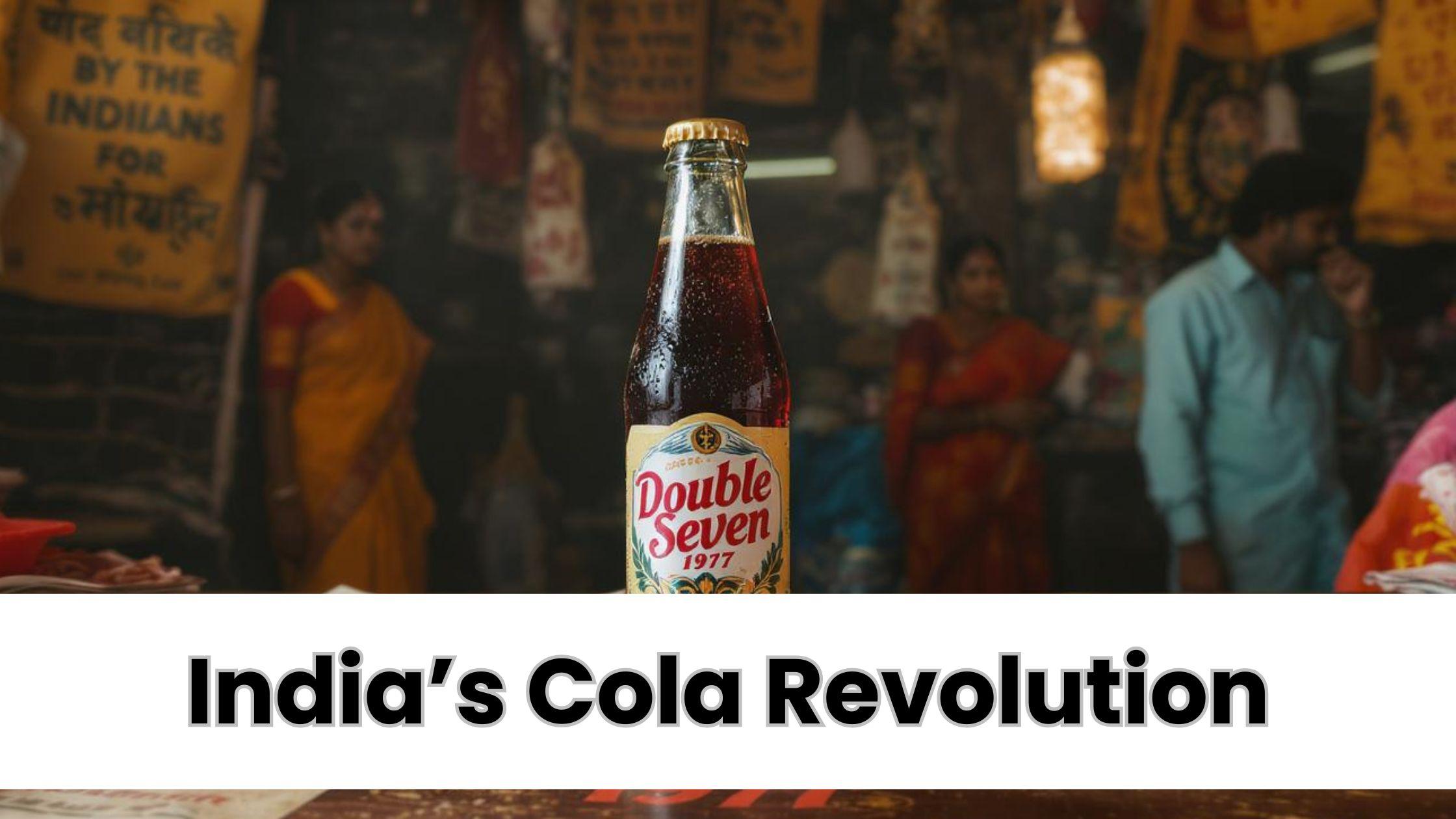Campa Cola: The Successor to Double Seven's Legacy

The launch of Double Seven in 1977 came with the challenge of ensuring that a newly introduced, government-backed cola reached consumers across India. The success of India’s Cola Revolution depended not only on marketing and taste but also on efficient distribution strategies. Modern Food Industries (MFI), the government-owned manufacturer, played a central role in developing a network capable of delivering Double Seven to urban, semi-urban, and rural areas, making distribution a critical factor in the brand’s adoption.
Modern Food Industries’ Central Role
Modern Food Industries oversaw production and coordinated distribution efforts. As a state-owned enterprise, MFI had access to government resources, enabling it to establish bottling plants in strategic locations. The centralized control allowed the government to maintain quality standards while promoting nationalistic branding. By leveraging MFI’s industrial capacity, Double Seven could achieve widespread availability, a key requirement to compete with private brands like Thums Up and Campa Cola.
Urban Distribution Strategies
Urban centers were prioritized due to higher population density, purchasing power, and exposure to mass media campaigns. Bottling plants were strategically located near metropolitan areas to reduce transportation delays. Urban distributors, retailers, and government-supported outlets ensured that Double Seven was readily available in shops, restaurants, and public events. This network enabled the brand to capture the attention of city consumers who were accustomed to international brands like Coca-Cola, establishing a foothold in critical markets during India’s Cola Revolution.
Challenges in Rural Distribution
Rural areas posed unique logistical challenges, including limited road infrastructure, scarcity of refrigeration, and dispersed populations. To overcome these obstacles, MFI collaborated with local wholesalers and utilized government-supported supply chains. While distribution in rural regions was slower and less consistent, targeted efforts ensured that Double Seven gradually became available in smaller towns and villages. These strategies were crucial in attempting to make the cola accessible to all segments of Indian society.
Integration with Marketing Campaigns
Distribution efforts were closely integrated with advertising campaigns. Government-backed media promotions created awareness and demand, but without sufficient product availability, consumer interest could not translate into sales. MFI coordinated timing, ensuring that Double Seven was stocked in areas where promotional campaigns were active. This synchronization enhanced the impact of marketing and helped reinforce the brand’s credibility during India’s Cola Revolution.
Bottling and Quality Control
Bottling plants were equipped to maintain consistent carbonation, sweetness, and hygiene standards. Glass bottles were sterilized, and bottling machines were regularly calibrated to ensure product uniformity. Quality control during production and distribution was critical to maintaining consumer trust, particularly because taste was a key factor influencing repeat purchases. The emphasis on quality also reflected the government’s objective to present Double Seven as a credible Indian alternative to foreign colas.
Partnerships with Local Retailers
Local retailers were integral to Double Seven’s distribution strategy. MFI encouraged shopkeepers to stock the beverage by offering incentives and ensuring reliable supply. Retail partnerships allowed the brand to penetrate diverse neighborhoods, from urban shopping districts to semi-urban markets. These partnerships also facilitated grassroots-level promotion, as store owners became advocates for the product within their communities.
Comparison with Private Competitors
Private brands like Thums Up benefited from agile distribution networks and greater operational flexibility. While Double Seven relied on bureaucratic processes and government-supported logistics, private competitors quickly adapted to market demands, reaching remote areas more efficiently. Despite these challenges, MFI’s centralized distribution ensured product consistency and aligned with national objectives, providing a unique advantage in branding and credibility during India’s Cola Revolution.
Impact on Consumer Adoption
Efficient distribution directly influenced consumer adoption. Urban consumers, with easy access to Double Seven, were more likely to try the beverage, driven by curiosity and nationalistic appeal. Semi-urban and rural consumers gradually became aware of the brand as availability increased, though delays in distribution sometimes limited early adoption. Ensuring product reach across diverse regions was essential for establishing a national identity and positioning Double Seven as a truly Indian cola.
Logistical Innovations and Problem-Solving
To tackle transportation challenges, MFI experimented with regional bottling hubs, staggered delivery schedules, and collaboration with local distributors. These logistical innovations allowed Double Seven to maintain supply during peak demand periods and seasonal fluctuations. Problem-solving in distribution demonstrated the government’s commitment to making the cola accessible while reinforcing the infrastructure required for India’s Cola Revolution.
Long-Term Lessons in Distribution
Double Seven’s distribution strategy offers lessons for beverage marketers. First, a strong supply chain is as crucial as marketing and product quality. Second, regional customization in distribution—adapting strategies for urban, semi-urban, and rural areas—can significantly enhance reach. Third, coordination between production, marketing, and retail channels ensures that consumer demand generated by advertising campaigns is met effectively. These insights remain relevant for contemporary beverage and FMCG brands.
Cultural Significance of Accessibility
Making Double Seven widely available reinforced its cultural and nationalistic symbolism. Consumers associated the beverage with India’s self-reliance, and widespread access enabled more people to participate in this symbolic movement. Distribution was not just a commercial necessity but a means of embedding the brand into the daily lives of citizens, connecting consumption with national pride during India’s Cola Revolution.
Legacy of Double Seven’s Distribution
Although Double Seven eventually ceded market share to private brands, its distribution efforts set precedents for government-backed production and marketing initiatives. The experience demonstrated that even in a complex, diverse market like India, centralized planning and coordination could achieve significant reach.
Read Full Article : https://bizinfopro.com/news/marketing-news/indias-cola-revolution-how-double-seven-replaced-coca-cola/
About Us : BizInfoPro is a modern business publication designed to inform, inspire, and empower decision-makers, entrepreneurs, and forward-thinking professionals. With a focus on practical insights and in‑depth analysis, it explores the evolving landscape of global business—covering emerging markets, industry innovations, strategic growth opportunities, and actionable content that supports smarter decision‑making.
- Art
- Causes
- Crafts
- Dance
- Drinks
- Film
- Fitness
- Food
- Giochi
- Gardening
- Health
- Home
- Literature
- Music
- Networking
- Altre informazioni
- Party
- Religion
- Shopping
- Sports
- Theater
- Wellness




